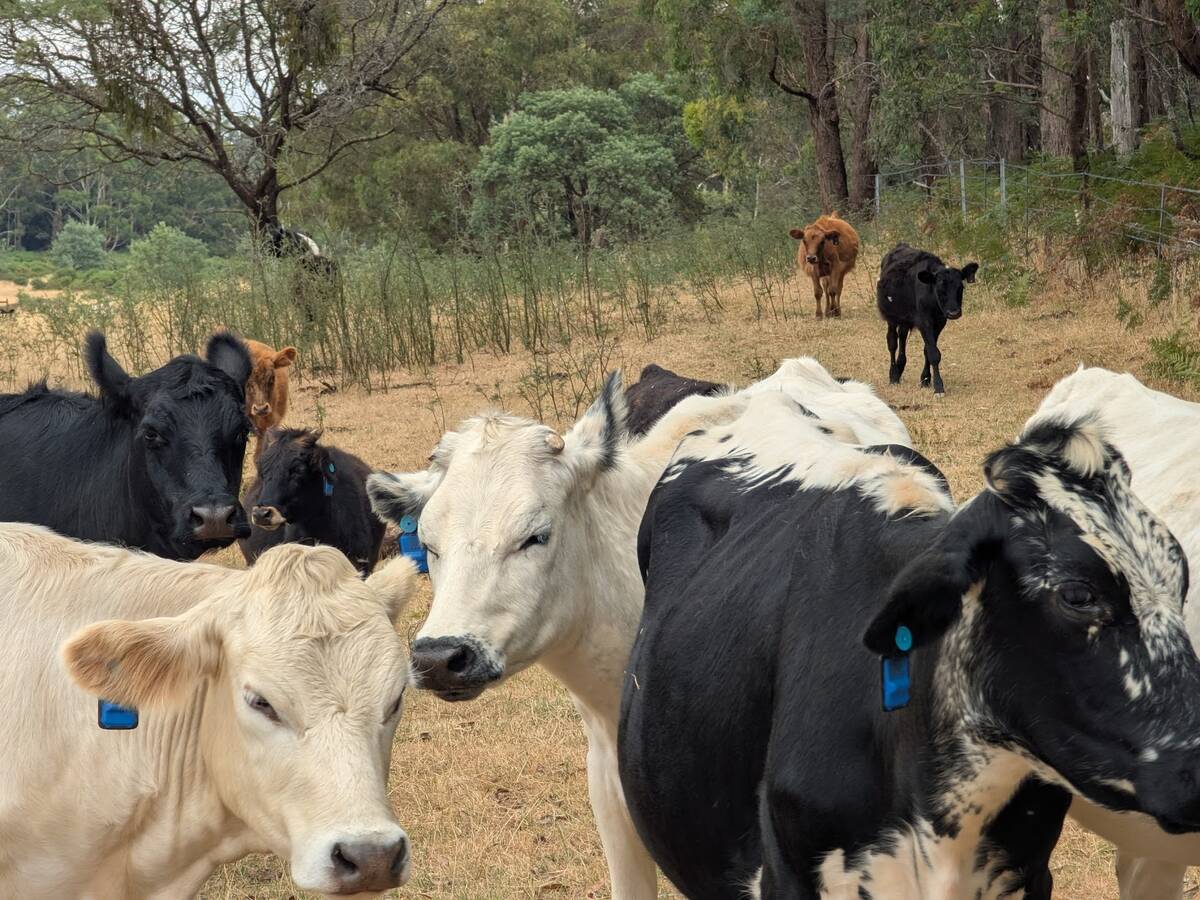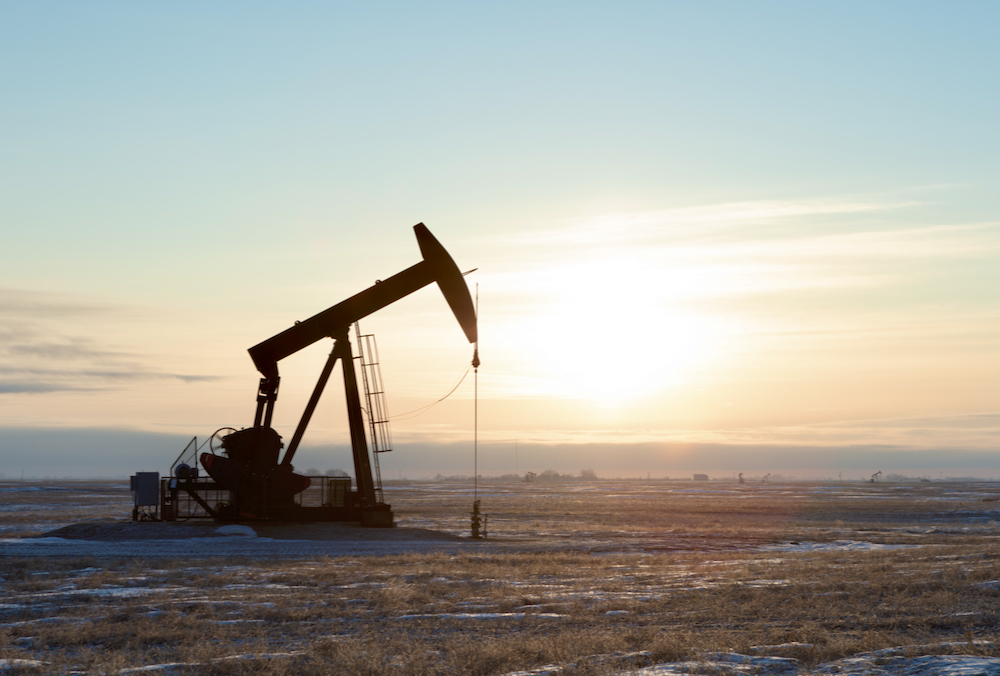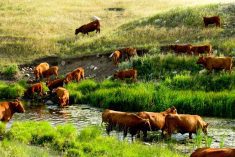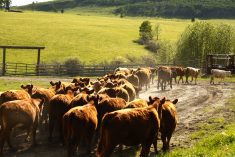When Karen Beauchemin began researching ruminant nutrition more than two decades ago, the conversation around greenhouse gas emissions was just beginning.
Dr. Beauchemin, a research scientist at the Agriculture and Agri-Food Canada Lethbridge Research and Development Centre, felt early on there was an environmental angle to her work in addition to improving animal nutrition, productivity and beef quality. This coincided with the Kyoto Protocol’s adoption in the late 1990s when the international community began paying attention to greenhouse gas (GHG) emissions as an environmental issue.
“I remember when I was speaking with the industry way back when, there was very little interest because consumers really weren’t aware,” Beauchemin recalls.
Read Also

Australian company brings ear-tag tech to Canadian pastures
With Smart Paddock, beef farmers and ranchers can track their cattle through GPS technology
“Fast-forward 20 years, most consumers are aware of greenhouse gas emissions, implications for climate change, and I think all sectors of the industry, including agriculture and beef producers, are really interested in doing their part.”
Not only has Beauchemin watched the dialogue around this topic evolve, but she’s also played a key role in the evolution of the study of enteric methane in cattle. At the start, research focused more on the volume of methane that animals produced in Canada and what affected that output. Later, attention shifted to understanding how to raise cattle in a way that decreased enteric methane production.
Today, reducing methane emissions has become a global priority, thrusting beef production into the spotlight. In October 2021, the federal government confirmed its role in the Global Methane Pledge, along with the U.S. and the European Union. Canada has committed to reducing its methane emissions by 30 per cent or more of its 2020 levels, with a target date of 2030.
Though cattle are often referenced concerning methane, agriculture is only one part of the overall picture of Canada’s GHG emissions. A 2021 report by the University of Calgary’s Simpson Centre for Agricultural and Food Innovation and Public Education states that “the majority of GHG emissions in Canada (approximately 84 per cent) are produced by oil and gas, transportation, buildings, heavy industry and electricity. Of the remaining 16 per cent, approximately 10 per cent of emissions are produced by the agricultural sector.”
Within Canadian agriculture, methane accounts for 38 per cent of the sector’s GHG emissions, while nitrous oxide makes up 36 per cent and carbon dioxide is 26 per cent, based on 2018 figures from Environment and Climate Change Canada. “GHGs arise from enteric fermentation of cattle, the application of synthetic and organic fertilizer, biomass decomposition, soil cultivation and tillage, mineralization of soil organic matter and manure, among other sources,” the report states.
Agriculture is not the only source of methane emissions in Canada. Methane is also produced by the oil and gas industry, coal mining, wastewater and landfills. However, the general public tends to focus on cattle as the main source of methane emissions, not taking into consideration the actual numbers.
“One thing I find with consumers is they have a real misconception about how much enteric methane from animals contributes to our national greenhouse gas budget,” says Beauchemin.
“I think a lot of consumers think it’s way more than the oil and gas sector or other sectors of the industry,” she says. “In Canada, 43 per cent of methane emissions are from the oil and gas sector. So when they talk about methane, they think it’s all from cows, but that’s not, in fact, the case.”
Enteric methane emissions from cattle only contribute 3.3 per cent of Canada’s total GHG emissions. Of Canada’s methane emissions, agriculture contributes 29 per cent, and more specifically, 24 per cent is enteric methane.
While the beef industry does need to work on reducing methane, Beauchemin states, that’s not the only area that needs attention, research and action to meet the federal goals. “I think beef producers are interested in doing their part, but just focusing on enteric methane emissions is not going to get Canada where it needs to be by 2030.”

The Canadian beef industry took a proactive approach to the federal goals, positioning itself as a leader in creating solutions. In a November 2021 press release, the Canadian Cattlemen’s Association (CCA) reiterated the industry’s commitment to a set of 10-year sustainability goals, which includes reducing GHG emission intensity from primary production by 33 per cent, protecting the 1.5 billion tonnes of carbon stored on grasslands managed with cattle, sequestering an additional 3.4 million tonnes of carbon each year, and reducing food waste and loss from secondary processing to consumers by 50 per cent.
For those advocating on behalf of Canadian beef producers in Ottawa, this discussion isn’t new. “It’s something we’ve been working on for many years, and, in fact, we had put out our goals earlier, prior to the federal government putting out their goals,” says Fawn Jackson, CCA’s director of policy and international relations.
“It’s a high priority of this government but also governments around the world, and so it’s really great that the beef industry has a plan and is a leader and (releases) actions that we can all work together on.”
Jackson believes the industry is prepared to tackle any challenges in meeting these goals by using the knowledge and tools we already have. “We are one of the best in the world, and the reason for that is because we have some of the best researchers, some of the best extension specialists and some of the best beef producers to uptake that research and extension,” she says.
The National Cattle Feeders’ Association (NCFA) is also prepared to take a major role in achieving the industry’s sustainability goals. “We understand, like most of the cattle industry … (at) large, that there’s opportunities for improving sustainable production of beef in our country,” says Casey Vander Ploeg, NCFA vice-president.
“Part of that is the feeding component on Canadian feedlots, and so we see ourselves as being an important player certainly in improving environmental outcomes for beef production.”
Research underway, but investment needed
Within the field of enteric methane research, there are two levels of investigation, says Beauchemin. The first level looks at the amount of GHG emissions produced relative to the amount of beef produced and how to improve efficiency.
In an AAFC study with the University of Manitoba, Beauchemin and other researchers compared methane emissions across the beef industry in 1981 to those of 2011, finding that the amount of methane per kilogram of beef produced had decreased by 15 per cent in those 30 years. This meant Canadian beef production had one of the lowest methane intensity levels in the world.
“It really was a result of improved utilization and adoption of technology at the farm gate — so better nutrition of animals, better genetics of animal, better crop yields, better reproductive technology,” she says. “Just by producers doing all the right things, we reduced the emissions per unit of beef produced.”
However, expanding production to meet the growing demand for beef means emissions will continue to rise based on the number of animals. Accordingly, the second level of investigation is developing and using technologies and management practices to decrease the amount of methane produced in the rumen, Beauchemin says.
When it comes to reducing enteric methane in beef cattle, there are challenges related to Canadian cow-calf production conditions; more progress has been made in dairy cattle, given the managed diets and facilities used in that system.
“It’s very difficult to provide a quick fix like adding a supplement or a feed additive to their diet because they’re grazing and we often don’t manage those animals on a daily basis,” says Beauchemin.
Another challenge lies in the lower-quality forages and byproducts often fed during winter, which leads to higher methane emissions.
In feeder cattle, however, there is exciting potential to reduce emissions using feed additives. Beauchemin was involved with several studies on a feed additive compound called 3-nitrooxypropanol, or 3-NOP, manufactured by DSM Nutritional Products. This game-changing ingredient prevents the production of methane by changing a step in the fermentation process within the rumen.
The first studies on 3-NOP at the Lethbridge Research Centre were primarily focused on metabolism. “We wanted to know the effects on the rumen microbiome and digestion of feed by the animals. We started our studies at the small scale just to see ‘does the product work?’” she says. These small-scale trials showed methane reductions of around 30 to 35 per cent, which Beauchemin found to be very encouraging.
From there, several research-scale feedlot trials were conducted studying animals with differing diets and doses of the product. “Once again, we were able to establish that we had reductions in methane emissions,” she says.
“Those reductions depended upon the diet and the dose, but they were very positive, and we also saw some small improvements in feed-to-gain ratio and no negative effects on animal growth.”
AAFC then partnered with DSM, Feedlot Health Management Services, Viresco Solutions and the Alberta Cattle Feeders Association to run a two-year large-scale study at a commercial feedlot near Nanton, Alta., wrapping up in spring 2021.
“The objective of the study was really to validate some of the responses that we had seen in our research-level studies,” says Beauchemin. “We wanted to feed the animals in a commercial scale to see what happened to animal performance, animal health, methane emissions and whether there were other concerns at the farm level.”
3-NOP was fed at different doses with different backgrounding and finishing diets. The results were similar to those of the earlier studies. “We saw reductions in methane emissions of about 25 per cent in the backgrounding diets all the way up to 40 to 80 per cent in the finishing diets, depending upon the type of grain and the dose of additive,” she says.
Currently, 3-NOP is not yet commercially available in Canada, though DSM has applied for approval here and in the U.S. The product is now approved in Brazil and Chile and is moving towards approval in the EU.
Scientists around the world are looking at other products for enteric methane reduction. In Australia, James Cook University and the Commonwealth Scientific and Industrial Research Organization found that a type of red seaweed, Asparagopsis taxiformis, has a compound called bromoform within its cells that prevents the creation of enteric methane. This group has partnered with the University of California, Davis, to continue to study the methane reduction potential of this seaweed.
Beauchemin and her team are also exploring seaweed as a feed additive, though their work is with species found off the Pacific and Atlantic coasts of Canada. Currently, they’re screening Canadian seaweed species to see if any of them have the bioactivity to reduce enteric methane production. “It’s still early-stage research, but it is something we’re going to hear more about in the future.”
This breakthrough work on 3-NOP came before methane reductions were a global priority, Beauchemin notes. “Now, if we prioritize methane from agriculture, we do need significant investment because that investment will lead to innovation,” she says.
“In the short term, we do have some technologies and some understanding and some advice and recommendations for producers, but as we move forward, we need really high-level innovation.”
The need for further investment towards research and extension was outlined by CCA in its November press release, along with the importance of being at the table for larger discussions. “As the government moves forward with its goals, environmental partners, such as the Canadian beef industry, should be included in the policy and investment development,” the release states.
“Maintaining research funding is certainly one that’s going to be key with the upcoming policy framework, and maintaining the infrastructure for extension as well is a challenge,” says Jackson. “On the feed additive side, we also need to make sure that we have processes to approve them in a timely manner.”
The rest of the story
There’s another challenge beyond meeting the industry’s environmental goals: most consumers don’t know the full sustainability story of Canadian beef production and agriculture in general. There’s more to this conversation than methane emissions or the role of one commodity.
“I would want (the consumer) to know that it’s not one product or it’s not one action but it’s the whole that we need to be focused on, and that Canada really is a world leader in sustainable agriculture production, no matter the commodity or the product,” says Jackson.
“We do want to make sure that people understand that agriculture is a system, and certainly a very large portion of our environmental story is the 1.5 billion tonnes of carbon that are stored in the grasslands that are protected by beef producers,” she continues. “I think sometimes people think, if we pull this lever, it’ll only have that impact, but in fact you really have to look at it as a system.”
For example, the importance of carbon sequestration and the negative environmental implications of grassland conversion is a huge chapter of this story that is often unknown beyond the agriculture community.
“The massive grasslands through the Canadian Prairies are kept healthy by grazing cattle, and those grasslands are sequestering carbon and GHGs from the atmosphere,” says Vander Ploeg. “The animal that’s alive is going to emit carbon as well, but it’s the net impact that we ought to be considering here.”
Working to communicate the full story with consumers requires a consistent, science-based approach, Jackson states.
“I think it’s absolutely critical that we continue to work, no matter what the perception is, that we continue to do the right thing. But secondly, certainly an awareness that we have, and I think across agriculture that we need to enhance communication with the general public in understanding agriculture in Canada,” she says.
Face-to-face conversations and opportunities for consumers to experience what occurs at the primary production level are proven to make a difference.
“One of the things that we’ve found very valuable is bringing members of the public, politicians, decision-makers onto a beef feedlot operation and showing them exactly what it is we do,” says Vander Ploeg.
“We’ve seen some very good success with that. They’re difficult to do—they take a lot of time and a lot of resources to do them—but I think that’s probably one of the best ways forward, to show people so they can see it and they can feel it and hear it, then they’re more likely to get the message.”
Focusing our efforts on the right audience is also crucial. “The consuming public is not one monolithic entity, either. There are vocal components of that that are anti-meat … and regardless of what the industry does, we’ll never bring those people on board. But those are people on the margins,” he says.
“The bigger part of the consuming public likes Canadian-produced beef and they put it on their plates and it’s healthy for their families, and they’ll continue to do that.”
For producers, working towards continuous improvement and production efficiency within individual operations plays a positive role in decreasing methane intensity. Being engaged with this conversation and finding ways to apply new technologies and connect with consumers will make a difference, too.
“This is going to be a team effort both to maintain the trust of consumers and policy makers as well as a team effort to achieve the outcomes that we need to,” says Jackson. “We all need to be working together on this as much as possible and communicating on it together, and that’s when we’re going to see the best outcomes for our industry.”

















